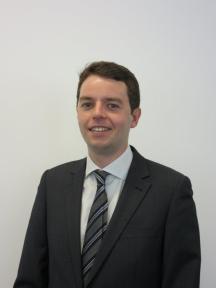This week’s blog comes from Ciaran McCarron, an MSc student who has led a project for the AKU Society looking at the cost effectiveness of nitisinone (the drug we trial in DevelopAKUre).
The project will allow DevelopAKUre to gain an in-depth understanding of the cost effectiveness of the drug which will be built upon when we approach licensing.Before new medicines are made available on the NHS, their costs and health benefits are often evaluated in an economic analysis. This is done by national organisations such as the National Institute for Health and Care Excellence (NICE) in England and the Scottish Medicines Consortium (SMC) in Scotland. The output of these economic analyses is described as a ‘Cost per Quality-Adjusted Life Year’ or ‘Cost per QALY’ for short. Usually, new medicines will be recommended for use on the NHS if their ‘Cost per QALY’ is below a certain threshold.

For the past two years, I have been studying for a Master’s degree in Economic Evaluation in Healthcare at City University in London, learning the techniques required to perform this type of analysis on medicines. As part of my degree, I was required to undertake a research project. When I met Dr Nick Sireau and learned about AKU and the drug nitisinone, I felt that an ideal project would be an economic analysis of the costs and health benefits of using nitisinone as a treatment for AKU.
The first step in the project was to identify and measure the annual costs of treating patients with AKU. Of course, the price of nitisinone was an important component of this, but other relevant costs included annual visits to the National Alkaptonuria Centre in Liverpool and the costs of major surgery in patients with severe disease.
Nitisinone reduces homogentisic acid and ongoing research will determine if it can also treat AKU. Assuming that nitisinone can slow progression of the disease, and comparing that to the costs of treating AKU in other ways (through pain relief, and operations), my economic analysis allowed me to calculate the ‘Cost per QALY’ associated with using nitisinone. The key concept that underpinned the analysis was that, by spending money on nitisinone, patients with AKU would be less likely to progress to severe AKU over time. This means that patients receiving nitisinone would be less likely to require expensive medical procedures such as major surgery and would also have a better quality of life.
The result of my economic analysis was that the ‘Cost per QALY’ associated with using nitisinone for patients with AKU was higher than the threshold that the NHS normally considers to represent good ‘value for money’. However, this must be interpreted in the context of AKU being a very rare disease, for which no other treatments have been shown to be effective. Therefore, it is likely that a higher ‘threshold’ should apply in this case and that nitisinone could be argued to be a cost-effective treatment.
I thoroughly enjoyed undertaking this project, during which I learned a lot about AKU and received great support from the team at the AKU Society and from Professor Ranganath in Liverpool. I’m keen to update the results of my economic analysis when we know more about the long-term clinical benefits of using nitisinone for the treatment of AKU.
If you would like more information about nitisinone, and the ongoing research study called DevelopAKUre, please visit: www.akusociety.org
